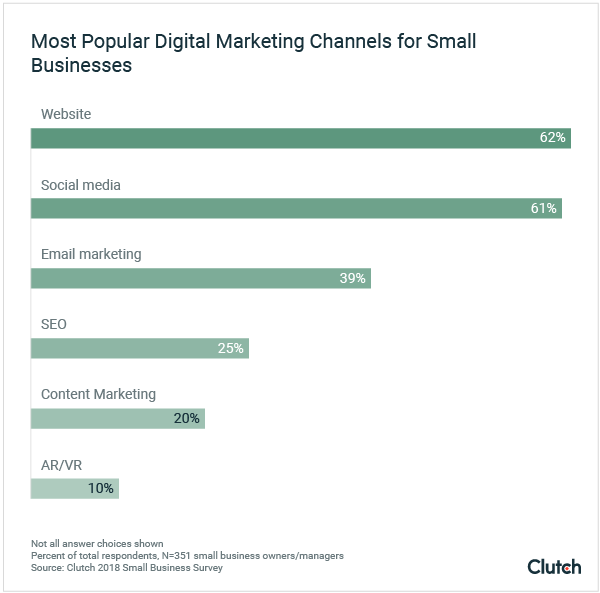
To launch your own clothing line you need more than creativity, design skills, a good eye and enthusiasm. As more apparel brands enter the market each year, you must develop skills and a plan to thrive in a competitive market.
The journey from idea to reality will require the use of both your entrepreneurial acumen and artistic creativity as you launch your clothing business.
Starting your own independent fashion business will come with more than a few mistakes, learning curves and tough decisions. To help guide you through the process, we have compiled a list of five essential steps required to successfully launch your own clothing line.
1. Determine your demographic
The U.S fashion industry is a vast and crowded market. In order to successfully get your clothing line off the ground, it’s very important for you to define your demographic and find your niche.
You should aim to produce clothing which is both unique, and delivers on the needs of your target audience. To help discover a niche, take some time to research your unique perspective, design aesthetic and current social and industry trends.

Once you have gathered research and developed your perspective, you can create designs that are unique, trending and target your specific niche. You may even decide to partner with, or hire, other freelance fashion designers in order to expand your design capabilities.
Providing unique products that meet your customers’ needs is the first step.
Successful clothing lines share 3 traits:
- Awareness of niche customer needs
- Timely and on-trend delivery of unique products
- A brand loyal customer base
2. Craft your clothing brand
Once you have narrowed down your niche, you are ready to craft your brand. By creating your brand from the very beginning, you can form a strong foundation and deliver a clear brand story and message from the outset.
As you start to craft your brand, consider four ‘Brand Pillars’ to help shape and guide your branding decisions:
- Mission: The essence and philosophy that drives your goals
- Value: The guiding principles that drive your clothing line
- Purpose: The driving force behind the creation of your clothing line
- Vision: A forecast for the future that is essential to preserve the future direction of your efforts within the industry
Most people immediately associate a clothing line with its brand identity (i.e., How a business wants a brand name, communication style, logo and other visual elements to be perceived by consumers.”) Ensure your designs and aesthetics are all consistent.
Create a visual style by using a physical or digital mood board. Collect images, photos, designs, colors, magazine snippets and inspiration to guide your brand discovery. All of your brand visuals will be in one place for easy reference.
Brand cult followings don’t happen overnight. But you can create a brand that sparks loyalty and a steady following. “Take time to really understand what motivates and moves your audience… Stay confident and genuine in your message. Then, share it with your audience in a relatable way.”
3. Find a clothing manufacturer
The supply chain complexity within the apparel industry is well known. “The fashion industry has short product life cycles, tremendous product variety, volatile and unpredictable demand, and long and inflexible supply processes,” according to The International Journal of Production Economics.
Deciding on which clothing manufacturer to work with will be one of the most important supply chain decisions you make. There are three critical areas to consider:
Communication
Ease of communication will be critical, and impact your first sample run and final product. During initial conversations and interviews, be sure to ask questions relevant to their understanding of your business, how they view themselves within your partnership, and the scope of their deliverables. Take note of communication style, ease and quality.
Factory location
The location of the factory will play a part in your working relationship and production costs. If you find a factory nearby, you’ll be able to be much more hands-on throughout the process and regularly visit the facilities.
Production scope
If you are running a fashion startup, you are likely small and nimble. Look for the same traits in a clothing manufacturer. Your new clothing line will probably require a small run manufacturer. These types of manufacturers will be okay with taking smaller orders, usually between 30 – 500 pieces at a time at a minimum.
4. Create a plan for production
The clothing production process is the heartbeat of your clothing line. This is where your vision, ideas and hard work will come to life.
“In most cases, this means going from a small set of samples or prototypes to commercial quantities of the item or style, often across multiple sizes, colors and patterns. As you can imagine, it’s impossible to separate production from the overall success of a brand, as great concepts can be designed, developed and sold, but a fashion business will ultimately live or die based on what is produced and delivered to the end consumer.”
Throughout the entire process it is important to play a significant role in partnering with your clothing manufacturer; from sourcing materials right through to the delivery of your sample run and subsequent orders.
5. Market and distribute your clothing line
Now that you have created your first run it’s time to let people know about it and promote your new clothing line. The goal is to get your clothing from the point of production to the point of consumption. This requires basic knowledge about the most effective marketing channels for your brand.

Unless you have a substantial marketing budget, the most effective and financially viable option is to launch your own business website with an e-commerce shopping cart. “A business’s website is the main way it communicates its products and services to the world. Many small businesses know this: The majority already have websites and [have increased] their website investments in 2018,” according to Clutch, a B2B research, ratings, and reviews firm.
Arguably, a website is your best distribution channel for a new online clothing brand. It is the foundation upon which all other online marketing channels rely on to drive traffic, discover new leads and make sales.
A website for your clothing line will allow you to:
- Share a strong brand story
- Improve brand awareness
- Generate more leads
- Increase sales revenue
With your website in place, it’s time to leverage effective digital marketing techniques. “For marketers, it’s very much a catch-22 cycle, where one has to prove that a particular channel is worth the cost, but that channel can’t perform adequately without a certain amount of spending. That’s why it makes sense to concentrate on specific channels,” says Neil Patel.
There are so many digital marketing strategies, and it can be overwhelming as you decide which ones to prioritize.
Social media, for instance, is a great way to tell your brand story and grow a loyal customer base. “Well over half of all small businesses currently market through their website (62%) and social media (61%).” Create a social media strategy that drives real outcomes for every tweet, like, post or pin.

Final thoughts
Making the decision to launch your own clothing line can be both a daunting and exciting experience. There are many considerations to take into account and there will be challenges along the way. However, these five steps can help you build the strong foundation required to launch a successful clothing line.
Leroy-Winston Scott is a Content Strategist at Sacha Agency, a California based digital marketing agency that provides clients with industry-leading marketing solutions. Leroy-Winston is an entrepreneurial minded marketer who loves helping startups and entrepreneurs increase their online visibility and bottom line sales. Working with a small startup agency keeps him hungry and involved with the processes of launching a own business. Sacha gives back by contributing 20% of their profit to support and preserve the Amazon Rainforest and the indigenous Kichwa tribe.
© YFS Magazine. All Rights Reserved. Copying prohibited. All material is protected by U.S. and international copyright laws. Unauthorized reproduction or distribution of this material is prohibited. Sharing of this material under Attribution-NonCommercial-NoDerivatives 4.0 International terms, listed here, is permitted.







